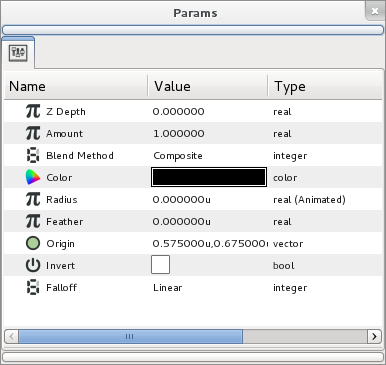

Fortunately, it is also obvious that two years of additional development have been invested in the project. Whether considering the structure of the homepage, the operation of the program, or the content of the manual, everything about Tupi seems familiar.
#SYNFIG STUDIO WARNING SOFTWARE#
Even though the programmers intend to go an independent direction with their software development, Tupi cannot deny its ancestral KTooN lineage.
#SYNFIG STUDIO WARNING CODE#
Alternatively, you can compile the source code itself it is no coincidence that the instructions are similar to those of the original project. Because of dissatisfaction with the obviously stalled KTooN project, the new development went down a whole new path, meaning that even if KTooN should be revived, the Tupi developers intend to stick to their own roadmap and goals.įor Ubuntu users, unofficial installation packages are available on. Objects that you want to use again later are saved in a separate “Objects Library.” A further module imports photos and helps generate simple stop-motion movies.Īlthough KTooN was developed by experts in the field, it is not convincing, starting with the fragmentary documentation, which is either not translated or no longer applicable, and continuing with the hardly helpful help system, which proves to be just as flawed as other parts of the program.Ī former co-developer of KTooN started a fork of the project in 2010, which continues to be developed independently under the name Tupi. In the illustration module, you can draw individual frames as in any other vector graphics program the illustration module starts the rendering process for the previously drafted film. KTooN includes illustration and animation modules. Finally, the completed animation is saved in various video formats. This hard work cannot be avoided because the program is not capable of tweening (see the “Tweening” box).

After the path is defined, an object is drawn anew for each frame to illustrate how it changes along the course of the path.

A simple project might consist of a path drawn by the user, along which an object will later move. In general, you should regularly save your project because the software often closes without warning.Īn animation in KTooN is created in several small steps. Only fragments of the quick reference guide are in English the essential part that describes the structure and the components of the program was never translated from the original Spanish.įortunately, the basics of the software are easy to discover with a little bit of experimentation on your own, although an intuitive and time-saving introduction would be more user friendly. On their homepage, the developers provide a quick reference guide, as well as a mini-tutorial, both of which, however, are obviously not up to date.

When you finally start the program, you will notice two bugs: The Tip of the day first displayed on startup remains blank (Figure 1), as do the Tooltips.įigure 1: In place of a daily tip, KTooN displays a blank window. KTooN is often not included in the official package repositories of new versions of various distributions however, the source code is available on SourceForge as well as the project website. Since then, however, the project again seems to have fallen into a deep slumber: During the past three years, the makers have neither published new code nor updated the project homepage. In 2009, with no new donors in sight, the initiators put the project on ice, then redesigned the software for a new stable release that appeared in 2010. Sponsored by public institutions, development continued until 2006. In 2002, two Colombians decided to facilitate their daily work as animators with the help of open source software, and KTooN was born. In the digital age, it’s a lot easier to accomplish. Even if the protagonist only moved a hand, the cartoonist had to conjure up the image on paper a number of times to achieve smooth animation. In the analog age, the artist had to take up a pencil and draw an entire picture over and over for succeeding frames.įlip books functioned according to the same scheme: One second of story required 30 hand-drawn images. Despite blockbusters such as Toy Story and Shrek, conventional cartoons still have countless fans, with growing audiences for budding cartoonists and animation hobbyists.


 0 kommentar(er)
0 kommentar(er)
